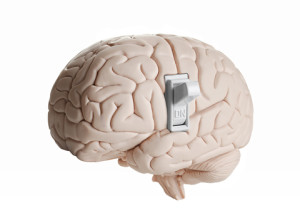
It almost sounds like a scene from a Star Trek movie. “Imagine a day when electrical impulses are a mainstay of medical treatment. Your clinician will administer electroceuticals that target individual nerve fibers or specific brain circuits to treat an array of conditions.” In other words, you will get a bioelectrical implant that will stimulate nerves to treat disease. This hybrid medical-engineering product could be used to modulate neural impulses that control the body or repair lost functioning. They could treat hypertension, diabetes, obesity, hear failure, pulmonary and vascular disease.
The above picture of the potential of electroceutucals is taken from Drug Discovery: A Jump-Start for Electroceuticals. Our nervous system transmits electrical impulses (action potentials) throughout the body. “Virtually all organs and functions are regulated through circuits made of neurons communicating through such impulses.” As a result, these circuits can be targeted for therapeutic intervention. There are two features of these circuits that make them attractive targets for therapeutic intervention. First, they are made up of discrete components that permit pinpoint intervention, unlike most drug-related therapeutics. Second, since the circuits are controlled by the patterns of electrical impulses, they can be altered for treatment.
Current neurostimulators (See Deep Brain Jolts) do not generate natural action potential patterns. But researchers believe that it is “now possible to transcend these constraints and create medicines that control action potentials” in ways that are compatible with biological function. The first step towards electroceuticals is to do a better job in mapping neural circuits associated with disease and its treatment. Anatomically, research needs to map disease-associated nerves and brain areas in order to find the best points for intervention. The signal patterns for both healthy and diseased states also need to be decoded and identified.
“Developing the technology to record from and stimulate larger sets of central and peripheral neurons will be critical to this pursuit of mapping disease-associated circuits.” The electroceuticals these researchers envision will be “closed loop,” meaning they will record incoming electrical impulses, analyze the data in real time, and modulate the signals in the neural circuit accordingly.
Sara Reardon on Nature.com noted that both the federal government and the pharmaceutical industry, GlaxoSmithKline (GSK) in particular, are confident this field will someday “produce real medicines.” In December of 2013 GSK announced a $1 million prize for the first team to develop a miniaturized, implantable device that could read specific electrical signals and stimulate an organ to perform a specific function reliably for 60 days. In July of 2014 the NIH announced a $248-million effort to map the body’s electrical wiring and develop such devices. GSK has already spent $50 million in-house on electroceutical research. And it is funding scientists at 25 different universities to develop devices “that can be made available to the broader research community.” Forbes.com reported that GSK has already funneled support to over 30 academics doing research into bioelectronics (electroceuticals).
GSK’s five-year plan starts with creating what it calls a “nerve atlas”—a giant roadmap defining all of the nerves of the body and the organs and processes they affect. From there, the challenge will be to build electronic platforms that can tap into those nerves and control them for therapeutic effect. “GSK is agnostic as to how we affect diseases. We want to have the best tools or technologies or medicines,” says Kris Famm, head of GSK’s bioelectronics R&D unit. “We have nerves that crisscross our entire body and control every organ, but from a therapeutic point of view we haven’t been able to use that for disease intervention. That is about to change.”
The NIH electroceuticals project is tentatively called Stimulating Peripheral Activity to Relieve Conditions (SPARC). It plans to focus on the mechanisms that underlie electrical control of organ systems. The first SPARC grants will be awarded in early 2015. The hope is that in the next six years, five organ systems will be have their nerves and electrical activity mapped out. Then electrode devices will be developed that can attach to the nerves and maintain high-resolution recording and stimulation with them for decades without causing damage. Sounds great, but wait for it …
Bioelectronic implants seem promising, but it is often unclear why they work. “Right now, a lot is based on phenomenology,” says Kip Ludwig, director of neural-engineering programs at the US National Institute of Neurological Disorders and Stroke in Bethesda, Maryland. “You put an electrode in the body, you stimulate, and you get an effect.”
GSK isn’t the only pharmaceutical company with an interest in electroceuticals. In Forbes, Arlene Weintraub noted that Johnson & Johnson invested $29.6 million into a startup company that is developing an implantable device to treat hypertension and heart failure. “And Boehringer Ingelheim struck a three-year deal with Menlo Park, CA-based Circuit Therapeutics to investigate the role of neural pathways in psychiatric disorders.” See a video embedded in the article on how bioelectronics might work.
The most challenging task will be to tease apart the hundreds of signals running to and from each organ. The goal is to target only the signal that elicits a desired effect, not those that could alter functions on other parts of the body. Brian Litt, a bioengineer at the University of Pennsylvania in Philadelphia, said: “It’s like putting a device across a highway, and trying to figure out, by looking at the cars passing, which will get off at which exit.”





